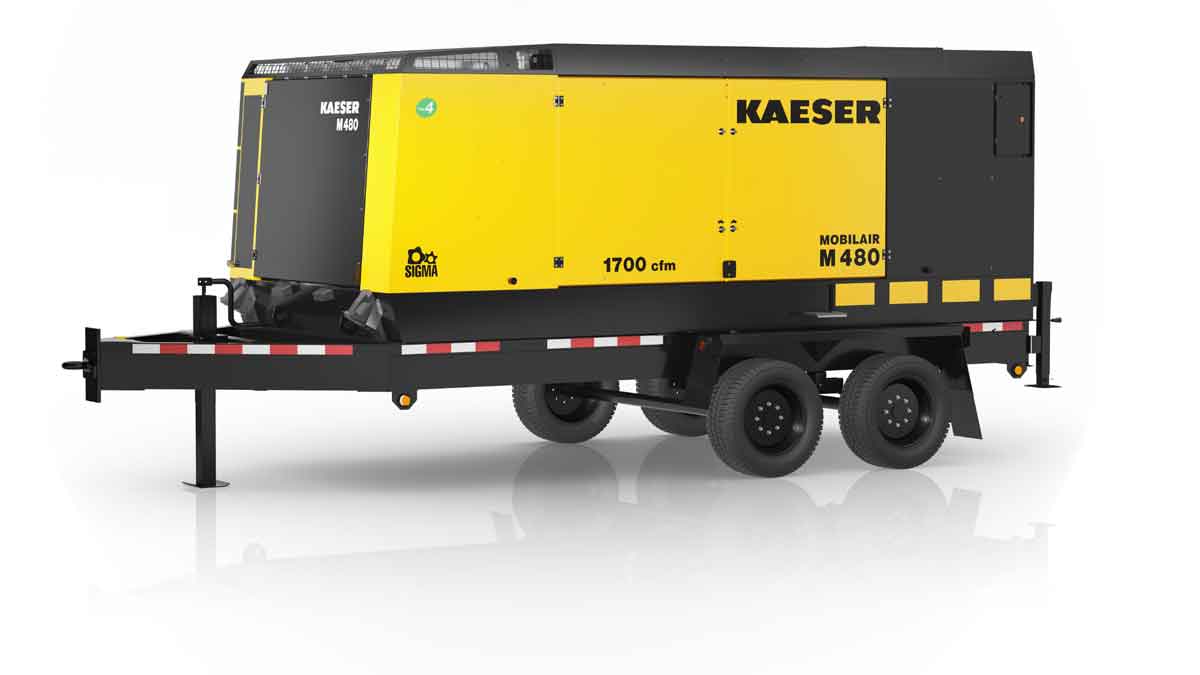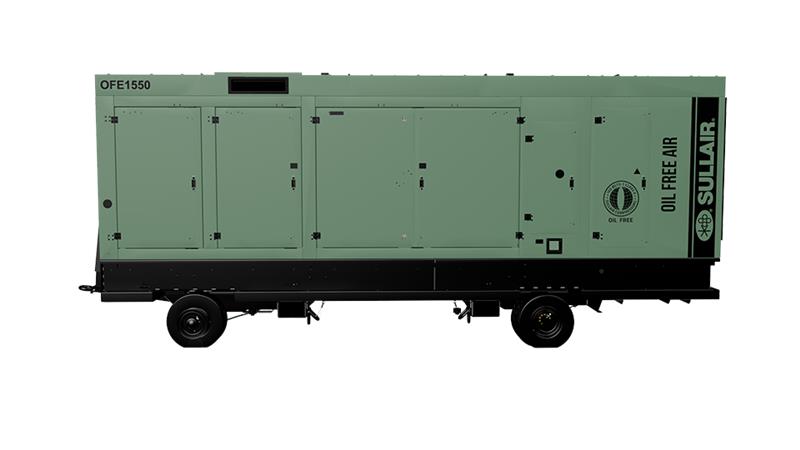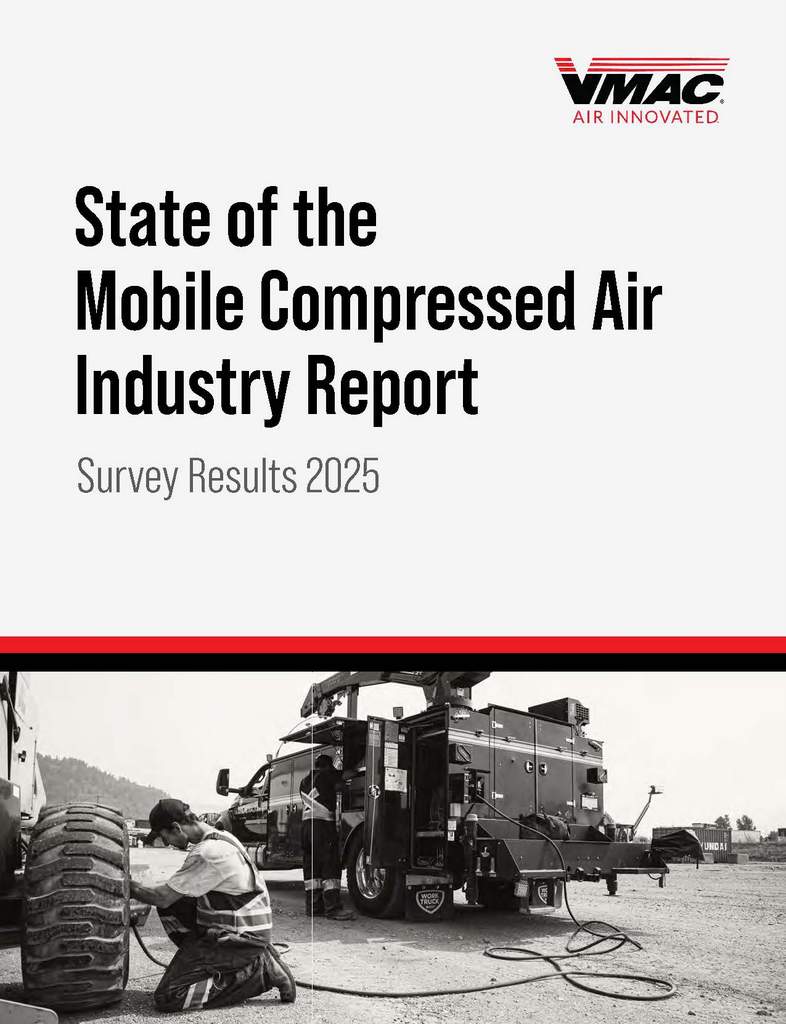Comparing Air Compressors for Premium Production
Selecting the Right Air Unit for the Right Job
With the popularity of pneumatic equipment, the old saying, “a worker is only as good as his or her tools,” might be updated to, “a worker’s pneumatic tools are only as good as the air compressor that powers them.” Contractors and project managers use compressors on a wide range of applications, including construction, mining, utility maintenance and oil and gas projects. Picking the right compressor for these applications goes beyond just matching cubic feet per minute (cfm) and pounds per square inch (psi) to the number of pneumatic tools or the application. It’s a decision that should also include features that can affect the cost of ownership, such as maintenance and fuel efficiency.
Beyond the Output
Avoid making the No. 1 mistake in equipment purchases — purchasing a compressor that is suitable for a single job without considering future applications. For example, a demolition contractor might buy a 185-cfm output compressor with the intent to power two, heavy-duty handheld breakers that consume a total 170 cfm. The same contractor might realize later that a future project requires additional pneumatic tools, such as drills and hammers. In that instance, the contractor needs to make due with the existing compressor, which jeopardizes productivity or purchase or rent another compressor to supplement.
Most contractors and project managers know that matching a compressor’s cfm and psi output to the demands of their pneumatic equipment is vital for optimal production, but that pairing is commonly overlooked on the jobsite. If crews are using a compressor that has too little airflow, pneumatic equipment becomes starved of power, which reduces productivity. Alternatively, grossly exceeding power demands reduces the compressor’s efficiency and typically increases the maintenance intervals on the equipment being over powered, which results in high operating costs and slow ROIs.
Selecting compressors that have variable operating pressures ensures your crew isn’t left without wind in its sails. Some 400-cfm compressors allow operators to tackle a wide range of jobs by easily adjusting the required operating air pressure from 58 to 150 psi. For example, contractors could have one compressor that can power handheld pneumatic tools and quickly adjust the machine to power psi-hungry equipment, such as those in sandblasting applications. And with the rising cost of Tier 4 Final equipment, contractors must weigh their equipment costs against other important factors that can minimize total cost of ownership and productivity, including fuel autonomy, maintenance, mobility and manufacturer support. This maximizes your dollar’s value when selecting a compressor to suit multiple applications.
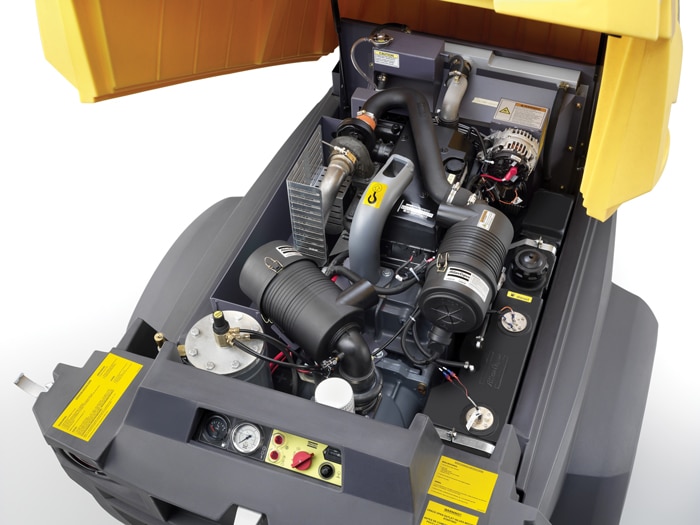
Project managers can minimize downtime by selecting compressors that feature integrated diagnostic systems that monitor performance — measuring exhaust, counting service intervals, recording oil temperature and much more.
Fuel Efficiency
Fuel consumption rates give project managers an idea of how fuel costs will affect a compressor’s total cost of ownership. To minimize fuel consumption, it’s important to choose a model with innovative components to keep fuel costs low. For example, fuel efficiency and tool performance can be dramatically reduced without an automatic regulator when using multiple pneumatic tools with one air compressor. When air pressure drops, such as when another tool is added to the air line, most compressors will respond by speeding the engine up to maintain the right output so performance won’t be affected. Once reaching the desired air pressure, the engine may return to idle until air pressure drops again. Continuing to cycle from idle to full throttle to achieve optimal air pressure considerably increases fuel consumption.
Most compressors feature stepless, fully automatic unloader valves and speed regulators, which minimize the effects of fluctuating air power demands. The valves and regulators constantly vary the engine’s speed to match the fluctuating demands of the operation. This conserves fuel for peak demand times because the engine does not have to continually accelerate from idle to full throttle. The automatic valves and regulators also provide consistent tool performance and give compressors long operating times — sometimes as long as 9 hours on a single tank.
For applications that require high cfm output, such as oil drilling and mining, project managers should consider compressors that incorporate fuel regulation systems. These cfm-demanding applications require more fuel than other construction applications because they need larger, more powerful engines to generate the required airflow and pressures. Fuel regulation systems complement automatic regulators and valves by providing the engine the required amount of fuel to meet the parameters set by the operator. Some manufacturers’ fuel regulation systems are included as standard features and can save 5 to 15 percent in fuel costs when the compressor is running at 35 to 80 percent capacity.
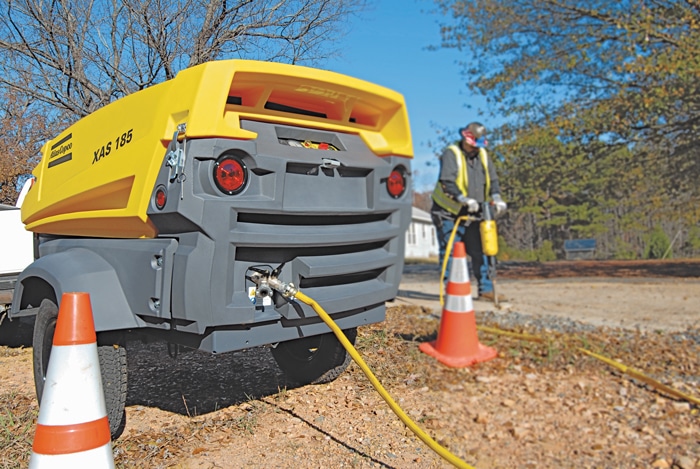
Avoid making the No. 1 mistake in equipment purchases — purchasing a compressor that is suitable for a single job without considering future applications.
Maintenance
Downtime is a production schedule’s worst enemy. It reduces worker productivity and delays projects, and when it’s caused by unexpected mechanical failures, it’s beyond frustrating. Picture a concrete renovation project, for example, where refinishing crews apply fresh concrete while following close behind demolition and prep workers that are removing old concrete. If the compressor supplying power to the demolition crews’ pneumatic hammers becomes damaged by debris, it halts both crews until the unit is repaired. That’s why experienced project managers seek out compressors that withstand harsh worksite conditions and can be maintained quickly.
Impact-resistant canopies minimize downtime by protecting the compressor from damage that can occur in harsh worksite environments, including construction sites, oil pads and mine tunnels. Most manufacturers use heavy-duty steel canopies to safeguard the engine and compressor components. Some manufacturers also use medium-density polyethylene canopies that make compressors lightweight and dent resistant, as well as able to withstand corrosion, fading and inclement weather.
Project managers can also minimize downtime by selecting compressors that feature integrated diagnostic systems. These systems constantly monitor the compressor’s performance — measuring exhaust, counting service intervals and recording oil temperature, to name a few — and the systems alert the operator if something is causing the compressor to operate outside of its normal parameters. This prevents small operational issues from becoming big problems and prolongs the service life.
Long maintenance intervals also reduce downtime caused by scheduled servicing. As with any equipment, routine maintenance ensures minimal engine wear and catches mechanical issues that need to be repaired; compressors are no exception. With the implementation of Tier 4 Final regulations, exhaust aftertreatment components, such as diesel particulate filters, diesel oxidation catalysts and selective catalytic reduction systems, need regular maintenance to ensure optimal engine performance and meet Environmental Protection Agency compliance. And the amount of aftertreatment components might vary between compressor models and manufacturers, so it’s a good habit to check the compressor operator’s guide to understand what and when maintenance should be completed to maximize uptime and the compressor’s service life.
Weather also affects maintenance intervals and output. Windy conditions can pick up dust and debris that clog filters, which reduces compressor performance and service intervals. To minimize the impact of wind and dust, a project manager should select a compressor that has an easy-to-service air filter to maximize their uptime and engine efficiency. During June, July and August, there is generally more moisture in the air, which causes the moisture content to increase inside pneumatic lines. Moisture isn’t a big factor in drilling applications since the air is used to blow out drill bit cuttings; however, high moisture content could prematurely wear some construction tools. Project managers should check their operator’s guides to weigh the benefits of incorporating moisture-reducing components.
Mobility
Project managers also need to consider mobility when selecting a compressor. Their mobility is a marriage between the compressors’ overall footprint and mounting systems — usually a trailer or skid. Picking highly mobile compressors minimizes downtime from loading and moving the compressor, which can be key to meeting tight construction deadlines but not entirely necessary for drilling applications.
Highly mobile compressors allow crews to quickly move as their job demands change. Some manufacturers attach compressors to single- or tandem-axle trailers that are easy to transport using a ball or pintle hitch. These trailers should feature heavy-grade steel to withstand the bouncing and shaking that can occur while transporting the units through rough terrain, such as at a construction site or drill pad. Support-mounted units are ideal for oil drilling applications because crews do not move as often.
Compressors with minimal footprints also optimize mobility, especially on cramped worksites. On bridge decks, for example, construction crews might be limited to working on a single traffic lane that can be as narrow as 9 ft wide for their equipment, tools and workers. That’s when working space almost becomes a luxury. For example, maintaining a lane on a quarter-mile-long bridge means construction crews have about 15,840 sq ft of workspace. This space quickly fills up as crews bring in large construction equipment and facilities, such as pavers, rollers, portable bathrooms and more. Some manufacturers build 185-cfm compressors that cover only 50 sq ft, which reduces the amount of space the equipment uses on the roadway or berm. This helps workers move freely around the worksite and navigate handheld pneumatic tools around the compressor.
After Sales Service
Some aspects of compressor selection go beyond features and benefits. Local servicing centers, for example, prolong equipment service lives and maximize uptime. Some manufacturers have service centers strategically located throughout multiple cities across the United States. This minimizes transportation costs and downtime if the compressor needs to be maintained or refurbished. Finding a reputable manufacturer that can service or refurbish your compressor ensures you’re getting the most use from existing equipment before you consider buying new.
Additionally, look for manufacturers that have been designing equipment for several years to avoid under-engineered units. Some manufacturers have more than 100 years of experience building and designing portable and stationary compressors for a wide range of applications. Doing your research on manufacturers before finalizing your decision identifies the ones that have been around the longest and are in-tune with your needs.
Rich Elliot is the product manager for Atlas Copco’s low-pressure compressors. He has more than 18 years of industry experience and is based in Columbus, Ohio.

